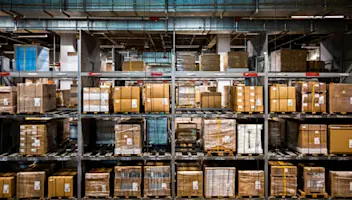Maximize Warehouse Efficiency For DTC Shipping with a Consumer Goods ERP
Maximize Warehouse Efficiency For DTC Shipping with a Consumer Goods ERP
Maximize Warehouse Efficiency For DTC Shipping with a Consumer Goods ERP
17 Déc 2019
Ken Weygand
Direct to consumer (DTC) shipping has completely transformed the landscape for consumer goods distributors. Consumers now expect their packages to be delivered within a 48-hour window, sometimes even sooner than that. It can be a serious challenge to master DTC shipping, but don’t worry, we’re here to help.
In order to help you prepare for the new DTC future, you need to think about how to maximize your warehouse efficiency within your ERP system.
As we mentioned in our first post in this series, when it comes to DTC, there are three primary challenges:
Having to manually retrieve, validate and create orders
The amount of time it takes to pull product and pack out each order
Using multiple systems to produce labels and paperwork
The latter two challenges directly influence the efficiency in your warehouse processes. Because the rate at which orders need to be processed and the volume of dot-com fulfillment orders that come in, there’s the challenge of being able to handle and process all those orders in your warehouse, especially with the majority of those orders having just one or two items.
You need to be able to efficiently allocate, pick, pack, replenish, and track your inventory and orders, and do this consistently and in real-time as those orders are coming.
As time goes on, you’ll end up working with more retailers and carriers, and with the smaller one to two item orders, you’re going to need a way to manage all of that product.
A centralized ERP system, particularly one that has built-in Electronic Data Interchange (EDI) capabilities, can better meet the requirements of ecommerce retailers, and the challenges of minimizing shipping costs, chargebacks, and the cost of using different software systems.
When considering where improvements in functionality could be made to your current warehouse processes, we encourage you to consider the following:
Warehouse structure:
With any system, the structure of your warehouse is the most vital part, and an industry-specific ERP gives you the opportunity to implement strategies and processes throughout your warehouse in order to make it run more effectively and efficiently. Your ERP system should be flexible in how you set up your warehouses, allowing not only for the definition of zones, areas and bin locations but also the rules for how you wish to operate. Users should have the ability to apply settings within each of those zones as it relates to inventory management, bulk picking/staging, put-away, receiving and picking. Finally, you should also have the ability to configure which warehouse workers should be active in each zone within your warehouse, and which operations they’re allowed to perform.
Real-time inventory availability:
To have access to real-time inventory information is invaluable. With the right ERP solution, like Apprise, you can get information on orders as they’re being created – is the product available, can we commit/allocate inventory to it, if not when will it be available; and with DTC shipping, this means automated Purchase Order Acknowledgements (EDI 855 documents) back to the e-commerce retailers you service.
Wireless warehouse:
Using wireless devices in the warehouse to perform operations allow for real-time visibility as to the work being performed, for paper to be eliminated, and allows you to better analyze your warehouse operations. Wireless capabilities include picking, packing, receiving and directed putaway, replenishing and cycle counting tasks, among others.
Customer shipping options:
In your ERP system, you should have the ability to support all the methods of shipping that are required by e-commerce retailers and consumers alike. This includes not only being able to seamlessly, from within the ERP, being able to create shipments and obtain shipping/tracking labels for any major small parcel carrier (ie UPS, FedEx, USPS), but also have tracking information and freight costs be automatically captured within the ERP. Additionally you should be able to control origin and return addresses, as well as if a return label is necessary, for small parcel shipments without having to leave the ERP. Ideally you want to be able to process the shipment within the ERP and have any/all necessary labels and data transferring and capturing be taken care of automatically. You should have many different options for how you ship out customer orders.
Single-Single processing:
This refers to an order with one line and one unit on that line. Your ERP system should provide the ability to identify and process those single-single type orders separate from multi-line multi-unit orders; single-single type orders have the ability to be processed much quicker, as there’s not a need to pick & pack multiple items. A packer should be able to scan a product and have the system find the order it will fulfill with that product. After that scan, the order will be processed, and the small parcel labels, as well as the pack slip, will be printed – all with one scan. This would be used in combination with the bulk pulling/order staging functionality, where you would bulk pull product, bring it to the packing area, and have packers finish the process – pick up a product, scan it, apply labels and pack slips, and repeat.
Your ERP system should offer many different options to help you run an efficient warehouse. To maximize efficiency, it is important to review the processes and methodologies currently implemented to see what your strengths and weaknesses are. As you transition to a heavily-focused DTC environment, it’s so important that you have a system that provides you with the right settings and strategies to adapt to that shift in the landscape.
The fulfillment landscape has changed and it’s time for you to change with it. Learn more here about how to maximize your warehouse efficiency during the DTC revolution by visiting our Aptean Distribution ERP overview page.
Related Content


Prêt à transformer votre entreprise ?
Nous avons les solutions ERP spécialisées dont vous avez besoin pour relever les défis de votre secteur.






